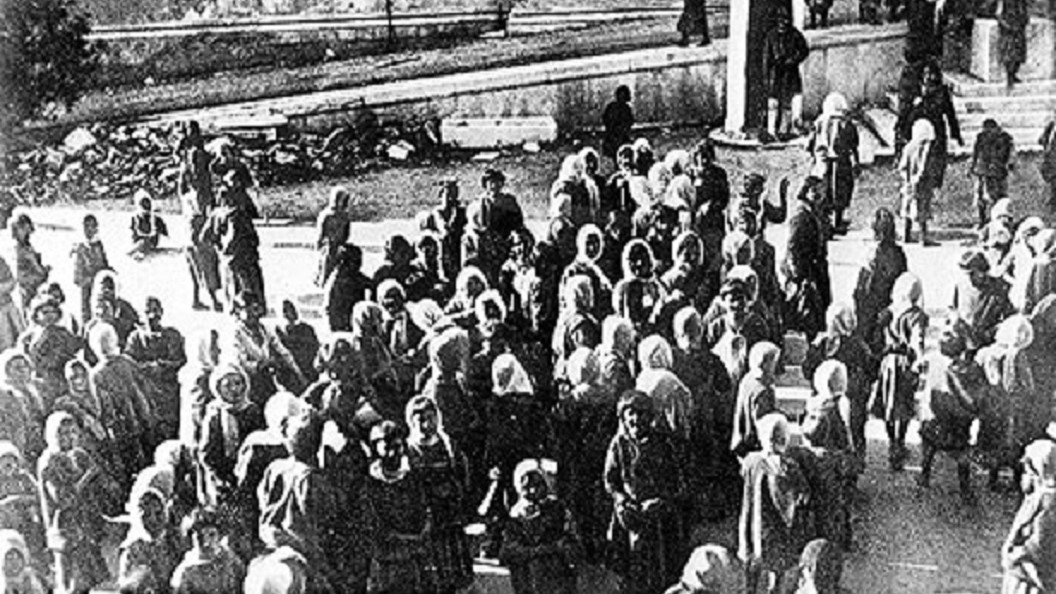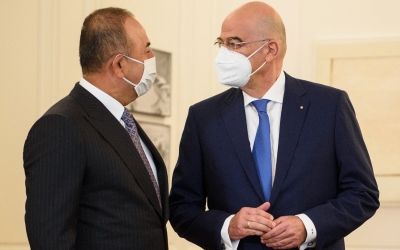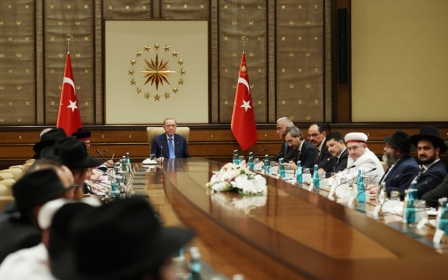Ayvalik: A picturesque Aegean town serves as a reminder of Greek heritage in Turkey
A century ago, Greece and Turkey signed a population exchange agreement that sought to redefine the demographic make-up of both countries, while solidifying the notions of what it means to be “Greek” or “Turkish”.
Issued on 30 January 1923, the agreement, which followed the collapse of the multi-confessional Ottoman Empire, is often referred to as an exchange between the “Turkish” population of Greece and the “Greek” population of Turkey.
However, the reality of the agreement was not that clear cut.
In practice, the population exchange was an exchange between religions. Muslims from Greece, whether they were ethnically Turkish, Albanian or Pomak, were deemed Turkish, and were consequently sent to live in the new Turkish republic, becoming assimilated into a brand new national community.
Even Muslims who spoke Greek were not spared from the transfers, with communities such as Cretan Muslims being uprooted from their homes to be resettled in the new Turkey.
In Turkey, too, distinct groups like the Karamanlides - a community of Turkish-speaking Greek Orthodox Christians - were suddenly branded with a new Hellenic identity.
As such, the Karamanlides of central and southern Anatolia were forcibly displaced from their villages, towns and cities, to be resettled in modern Greece.
Many of these uprooted communities struggled to assimilate into the nation states in which they suddenly found themselves. Muslims who arrived in Turkey often experienced discrimination, being referred to in slanderous terms such as “infidels”, whereas many Anatolian Orthodox Christians in Greece experienced significant poverty and prejudice at the hands of their Hellenic co-religionists.
For the aspirational nationalist regimes of Greece and Turkey, however, the population exchange was seen as a blessing, which brought to a close a decades-long process of displacement and dispossession.
The influx of Orthodox Christians in Greece allowed the country to establish demographic dominance in cities such as Salonica (now Thessaloniki), where Greek-speaking Christians had previously been a minority for several centuries under Ottoman rule.
Similarly, in Turkey the mass migration of Muslims allowed for the Turkification of large swathes of territory throughout the country, aiding the consolidation of a religiously homogeneous state.
The politics of remembering
Now, as the number of people in Turkey and Greece with memories of life before 1923 dwindles to non-existence, physical sites are increasingly the primary reminders of what life looked like before the exchange.
On both sides of the Aegean, churches and mosques, madrasas and school buildings, minarets and belfries remain, often in derelict condition, nevertheless reminding newer generations of a different past.
The picturesque town of Ayvalik on Turkey’s northwestern Aegean coast embodies the mass demographic changes that struck the region in the 20th century: a past that continues to reflect upon the region’s current population, its cultural landscape and its historic heritage.
Before the population exchange between Greece and Turkey in 1923, the Aegean town of #Ayvalık (Αϊβαλί/Κυδωνίες) had a population that consisted almost entirely of Greeks. Here is a #thread of the town’s beautiful churches, many of which are now mosques. pic.twitter.com/uV8sQNgwFs
— Kenan Cruz Çilli (@kenancruz) September 21, 2022
Ayvalik was a major centre for Greek commercial, literary and intellectual life in Ottoman times, with a population that consisted almost exclusively of Greek Orthodox Christians.
This community built numerous grandiose churches that towered over the impressive stone mansions and pretty cobblestone alleyways of the town.
The history of Ayvalik personifies the pain of displacement, as the entire local Greek Orthodox population was forced to leave, following the withdrawal of Greek troops from the region at the end of the Greco-Turkish war of 1919-1922.
Ayvalik was a major centre for Greek commercial, literary and intellectual life in Ottoman times
Later, successive waves of Muslim migrants, who were themselves victims of displacement from Greece, arrived in Ayvalik. Families arrived en masse from the far off island of Crete, nearby Lesbos, and the Greek mainland.
With the arrival of Muslim migrants, many of Ayvalik’s churches were converted into mosques: frescoes were plastered up, pulpits became minbars, and in the case of one church, a minaret was added beside a bell tower.
Many other churches were left abandoned, facing decades of natural corrosion, as well as vandalism.
These physical reminders of non-Muslim heritage in Turkey were a source of insecurity for many politicians during much of Turkey’s republican history. For this reason, proposals and efforts to restore such sites were traditionally met with a bitter nationalist backlash.
In Ayvalik, as elsewhere, heated debates took place in the district’s local administration with regards to how the Greek heritage of the town should or should not be preserved.
Over the past two decades, the hardline nationalist stance that opposed the conservation and rehabilitation of Greek Orthodox sites began to soften. As a result, no fewer than five churches and chapels have been restored in the district of Ayvalik in recent years. Four of the previously derelict churches became museums, and one was returned to its pre-1923 function as a holy water spring, or hagiasma.
Four of the previously derelict churches became museums, and one was returned to its pre-1923 function as a holy water spring, or hagiasma
Almost all of these initiatives were privately funded, with an additional site having been restored under the auspices of the Turkish Ministry of Culture and Tourism.
Though critics rightfully point towards the self-serving political interests behind state-funded restorations of non-Muslim sites in Turkey, it is undeniable that these sites spark important questions in the minds of visitors. Locals and tourists alike are reminded of the heterogeneous history of the region, in which many different ethno-religious groups cohabited in towns and cities, creating a unique multicultural urban environment.
These observations often lead to much-needed critical scrutiny of the politics of both Greece and Turkey in the present day.
Preservation and nationalism
On either side of the Aegean, the preservation of minority heritage is all too often seen as the preservation of the heritage of the “other”.
Therefore, it is not uncommon for restoration initiatives to be seen as tokens of goodwill or as political favours that merit a reciprocal act from the other country.
Reciprocity and "whataboutism" continue to dominate the official discourse between Greece and Turkey.
The nationalist ideologies that drew firm lines of separation between the two countries 100 years ago continue to hold significant sway today.
Over the past year, as tensions between Greece and Turkey have continued to flare over a number of key issues, both Turkish and Greek authorities have clearly demonstrated the inflammatory nature of chauvinistic nationalism.
As key elections are on the horizon in both countries, political leaders in Ankara and Athens have seemingly decided to push exclusionary nationalist discourses so as to galvanise popular support.
It is unfortunate that the centenary of the population exchange in January 2023 will most likely be marked by this incendiary and divisive rhetoric by both Turkish and Greek leaders.
It is a disservice to the descendants of the exchanged populations on either side of the Aegean to mark a painful historic episode by seeking to exacerbate tensions and re-accentuate differences.
It is therefore up to Turkish and Greek civil society to reject the same divisive language that led to the population exchange a century ago, focusing instead on embracing the many commonalities that unite the two societies.
In this light, members of Turkish and Greek civil society should prepare to organise centennial commemorations that focus on the mutual recognition of pain and suffering caused by the population exchange.
Sites of memory, such as the churches of Ayvalik or the many abandoned mosques sprinkled throughout Greece, could act as the ideal venues to commemorate the tragic events that unfolded a century ago.
Calls should be made on either side of the Aegean to demand the preservation and restoration of these sites of memory - not as acts of benevolence or in expectation of reciprocity, but rather as an act of recognition that these heritage sites are part and parcel of the local history, and that they serve only to enhance the cultural richness and landscape of the two countries.
This article is available in French on Middle East Eye French edition.
Middle East Eye propose une couverture et une analyse indépendantes et incomparables du Moyen-Orient, de l’Afrique du Nord et d’autres régions du monde. Pour en savoir plus sur la reprise de ce contenu et les frais qui s’appliquent, veuillez remplir ce formulaire [en anglais]. Pour en savoir plus sur MEE, cliquez ici [en anglais].






